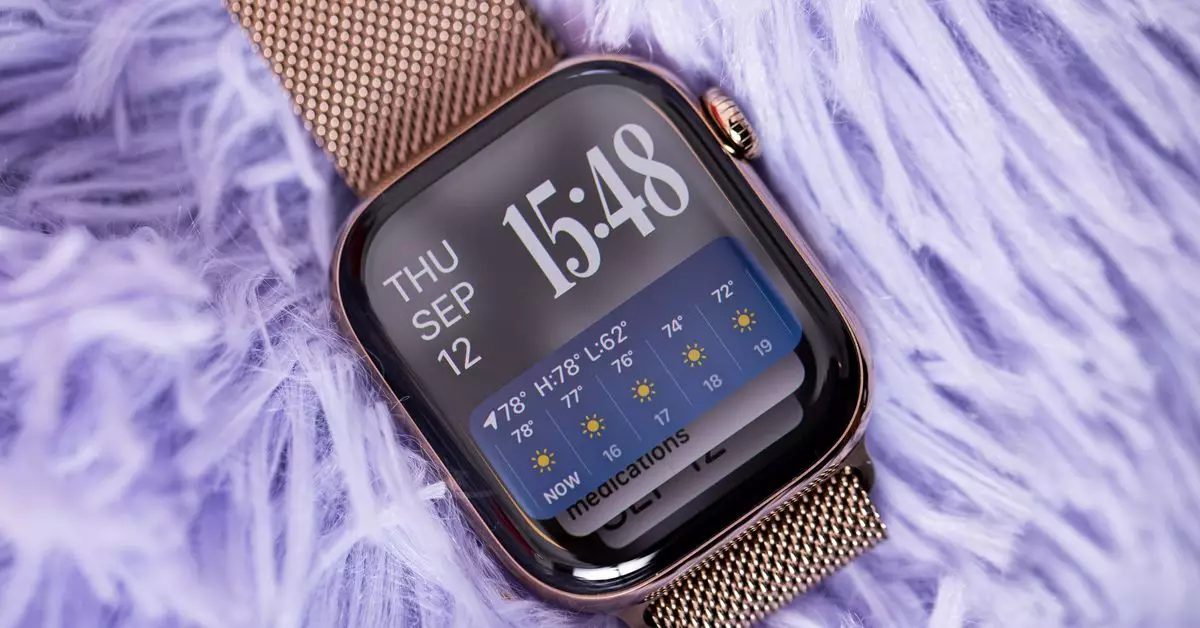As the clock strikes midnight on December 31st, millions of individuals across the United States engage in a somewhat traditional practice: crafting New Year’s resolutions. These personal commitments often focus on self-improvement, encompassing myriad goals, from adopting a healthier lifestyle to cultivating new skills. The desire to enhance one’s health and fitness is frequently at the forefront of these resolutions, prompting many to seek new tools that can assist them in their endeavors. Among the most recommended gadgets for this purpose is the Apple Watch Series 10, which has garnered significant attention and, quite recently, enticing sales.
The Apple Watch Series 10, available in both 42mm and 46mm models, has seen a markdown at several major retailers including Amazon, Walmart, and Best Buy, with prices starting as low as $329. Considered an essential gadget for anyone serious about health tracking, the Series 10 represents a notable upgrade over its predecessors, albeit in incremental strides. Sporting a vibrant OLED display that boasts 30 percent more screen real estate, the device is thinner and aesthetically more appealing than previous iterations, making it a stylish accessory as much as a fitness tool.
While the Series 10 may not dethrone specialized fitness wearables meant explicitly for hardcore athletes, its strengths lie in its comprehensive integration within the Apple ecosystem. This renders it a valuable asset for casual athletes or those taking their first steps into the realm of wearables. The unique selling point of the Apple Watch remains its ability to interconnect effortlessly with other Apple devices, creating an integrated experience that few competitors can match.
The defining changes for the Apple Watch Series 10 might not solely derive from its hardware enhancements but rather from the robust updates provided by watchOS 11. Among the newly introduced features is the Training Load application, a tool designed to provide nuanced recovery metrics, catering specifically to active users looking to manage their workout intensity. Additionally, the ability to pause Activity Rings is a welcome adjustment, reflecting Apple’s responsiveness to user feedback. While none of these updates could be classified as revolutionary, they certainly bolster the functionality of the device, particularly for users upgrading from older models or first-time Apple Watch owners.
The inclusion of sleep apnea detection further highlights Apple’s commitment to holistic wellness, allowing users to monitor and address potential health concerns with greater ease. The larger charging coil is another advantageous feature that enables users to charge their devices from 0 to 80 percent in approximately 30 minutes, enhancing convenience for those with a busy lifestyle.
Apple’s ecosystem extends beyond the Apple Watch itself, with various accessories offered by brands like Nomad. For instance, their ongoing Holiday Hangover Sale provides consumers with a 20% discount on various items, including unique Apple Watch bands, leather cases for other Apple devices, and chargers. Furthermore, while the Apple Watch remains a popular choice, alternatives such as the Google Pixel Watch 3 are also currently available at competitive prices—signifying the growing diversity in the smartwatch market.
Ultimately, the Apple Watch Series 10 serves as a thoughtful investment for those looking to enhance their fitness journeys in 2025. Coupled with its software updates and accessory offerings, it positions itself uniquely within the smartwatch space. While it may not cater exclusively to elite athletes, the convenience, comprehensive health tracking, and impressive device compatibility make it a reliable companion for anyone dedicated to improving their health and embracing an active lifestyle. In a world where tech increasingly intertwines with our daily routines, products like the Apple Watch underline the importance of finding the right tools to help achieve our goals—whatever they may be.

